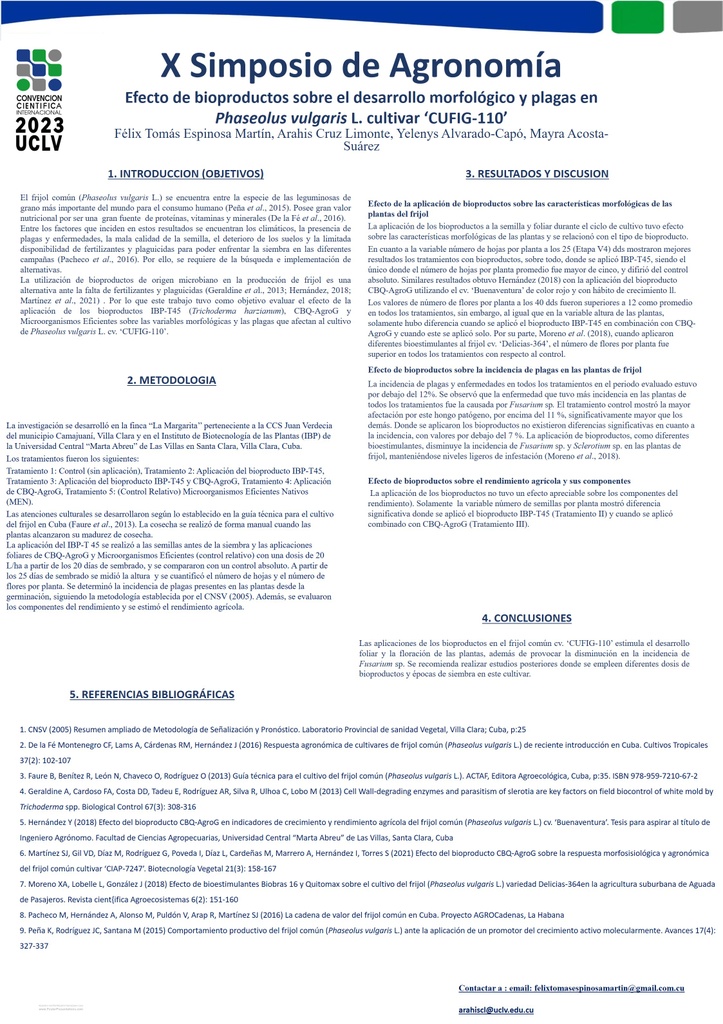Executive Secretary

9th International Scientific Conference on Agricultural Development and Sustainability
10th Symposium of Agronomy

Abstract
The use of bioproducts of microbial origin in the production of common bean (Phaseolus vulgaris L.) is an alternative in the absence of fertilizers and pesticides. Therefore, this work aimed to evaluate the effect of the bioproducts IBP-T45 (Trichoderma harzianum), CBQ-AgroG and Efficent Microorganisms on the morphological variables and pests that affect the cultivation of Phaseolus vulgaris L. cv. ‘CUFIG-110’. The application of IBP-T 45 was made to the seeds before sowing and foliar applications of CBQ-AgroG and Efficient Microorganisms (relative control) with a dose of 20 L/ha from 20 days after sowing, comparing them with absolute control. After 25 days after sowing, the height was measured and the number of leaves and the number of flowers per plant were quantified. The incidence of pests present in the plants from germination was determined. In addition, yield components were evaluated and agricultural yield was estimated. The use of bioproducts in the common bean cv. 'CUFIG-110' stimulates foliar development and flowering of plants, in addition to causing a decrease in the incidence of Fusarium solani, not being the case with the other pests identified in the evaluations. It is recommended to continue the study at different planting times.
Resumen
La utilización de bioproductos de origen microbiano en la producción de frijol común (Phaseolus vulgaris L.) es una alternativa ante la falta de fertilizantes y plaguicidas. Por lo que este trabajo tuvo como objetivo evaluar el efecto de la aplicación de los bioproductos IBP-T45 (Trichoderma), CBQ-AgroG y Microorganismos Eficientes sobre las variables morfológicas y las plagas que afectan al cultivo de Phaseolus vulgaris L. cv. ‘CUFIG-110’. La aplicación del IBP-T 45 se realizó a las semillas antes de la siembra y las aplicaciones foliares de CBQ-AgroG y Microorganismos Eficientes (control relativo) con una dosis de 20 L/ha a partir de los 20 días de sembrado, y se compararon con un control absoluto. A partir de los 25 días de sembrado se midió la altura y se cuantificó el número de hojas y el número de flores por planta. Se determinó la incidencia de plagas presentes en las plantas desde la germinación. Además, se evaluaron los componentes del rendimiento y se estimó el rendimiento agrícola. El uso de bioproductos en el frijol común cv. ‘CUFIG-110’estimula el desarrollo foliar y la floración de las plantas, además disminuye la incidencia de Fusarium sp., no siendo así con las demás plagas identificadas en las evaluaciones. Se recomienda continuar el estudio en diferentes épocas de siembra.
About The Speaker

Félix Tomás Espinosa Martín

Discussion

